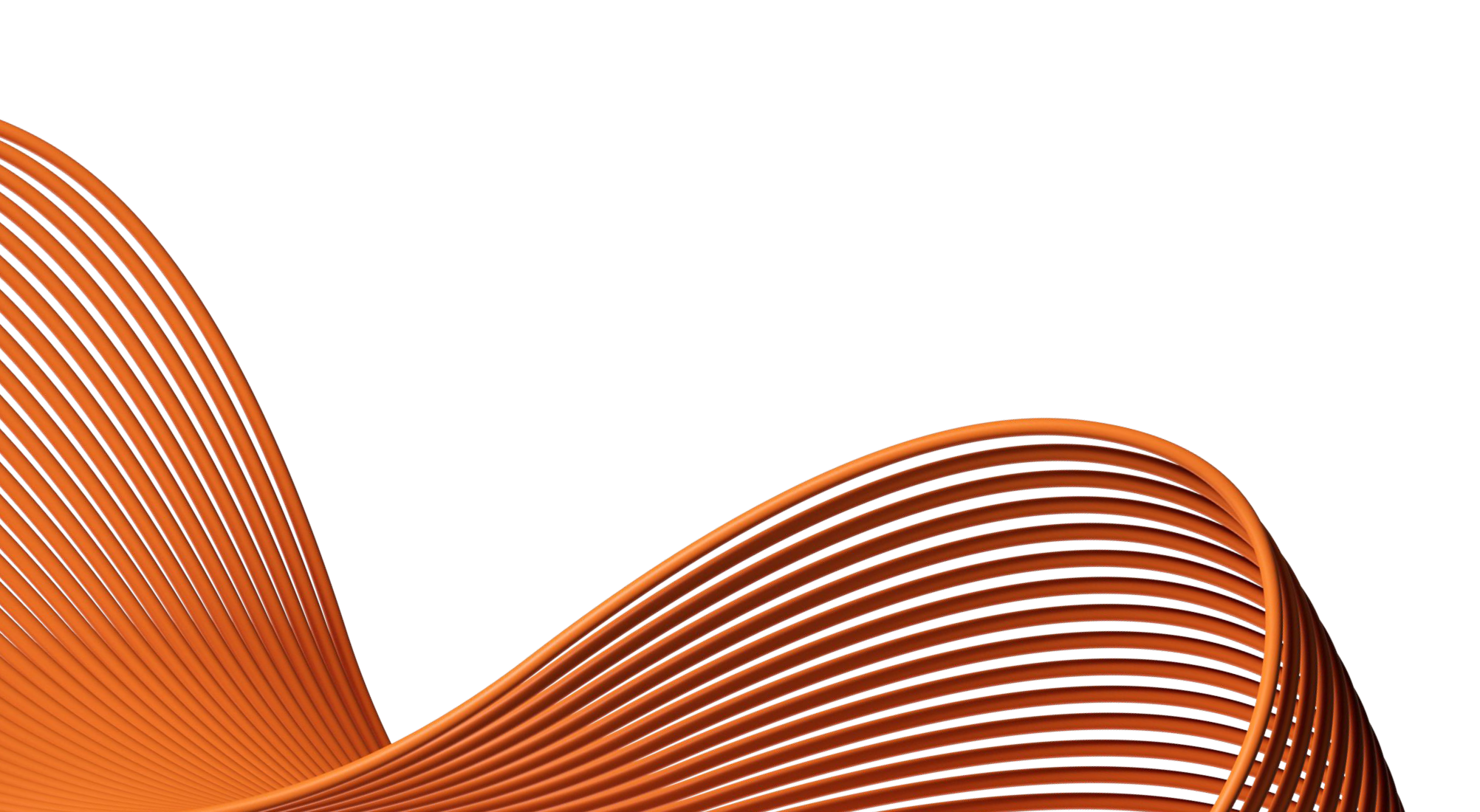- Our Products
- Upper Extremity
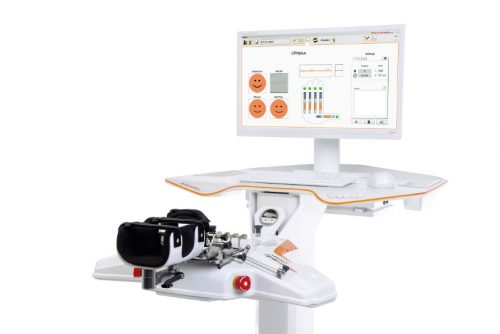 Amadeo Finger-Hand-Rehabilitation
Amadeo Finger-Hand-Rehabilitation
Amadeo is giving hands back their grip and fingers their finesse. Patients who are barely able or unable to grasp can perform hundreds of robot-assisted grasping movements. It won’t train a new Mozart. But it will help patients return to the piano, handwriting Christmas cards, and grabbing life firmly by the horns.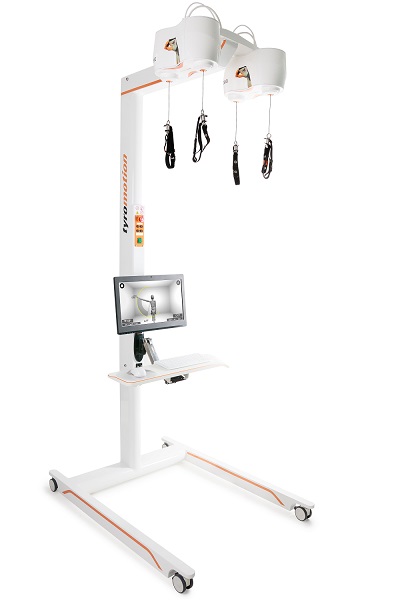 DiegoShoulder-Arm-Rehabiliation
DiegoShoulder-Arm-Rehabiliation
Diego is designed to strengthen what’s important. Whether proximal or distal training, Diego purposefully supports the rehabilitation of natural motion, allows the handling of everyday objects to be relearned, and is usable by adults and children alike.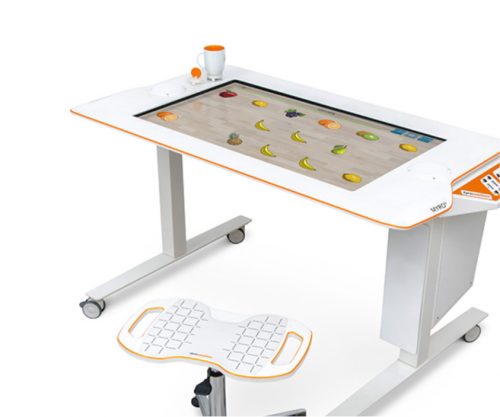 Myro Interactive and task-specific therapy
Myro Interactive and task-specific therapy
Myro is made for making humans get better! The sensor-based surface enables task-oriented rehabilitation with real objects, trains the patient’s cognitive abilities, and improves motor abilities of the upper extremity.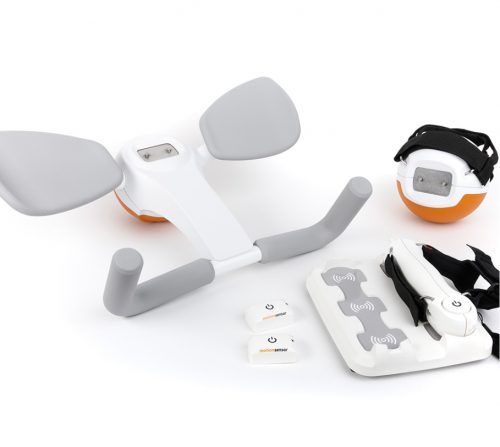 Pablo Upper Extremity Rehabilitation
Pablo Upper Extremity Rehabilitation
As a multifunctional rehabilitation device with comprehensive accessories, Pablo enhances classical therapy exercises with biofeedback, objective assessments, and gamification. It won´t train the next Picasso. But it will help patients to take back control of their lives.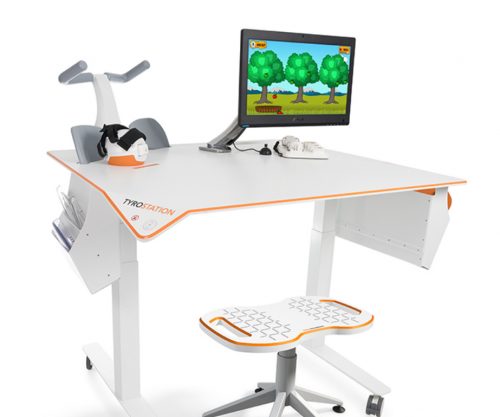 Tyrostation The perfect therapy setting
Tyrostation The perfect therapy setting
The Tyrostation is home to all components of Pablo and Tymo and provides ergonomic adaptability for patients. Sometimes, it´s about the little things in life – or therapy.
- Lower Extremity
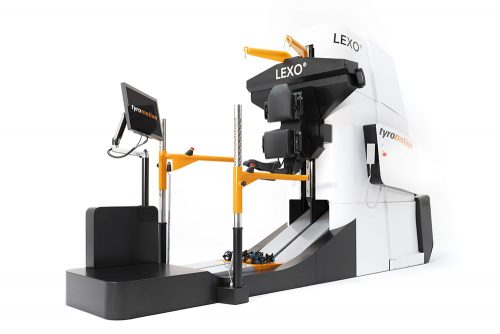 LexoGait and Locomotion
LexoGait and Locomotion
Lexo is a revolutionary gait trainer and impresses with fast setup, high patient activity and optimal trunk support. It encourages active participation and enables therapists to focus fully on their patients.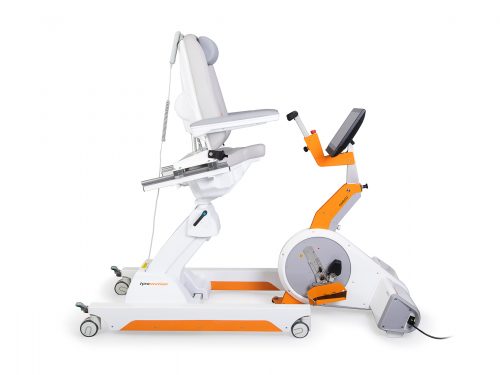 Omego Plus Gait training for the goals across all phases
Omego Plus Gait training for the goals across all phases
More than just a therapy bike! Omego Plus combines uni- and bilateral leg training, leg press, stepper, cycling & foot lift training in one device. Stride stronger with Omego Plus!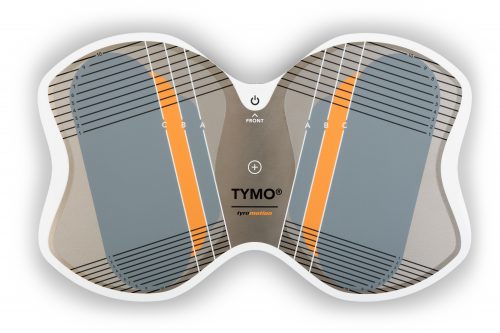 Tymo Balance training and postural control
Tymo Balance training and postural control
Small but powerful! Tymo is a versatile measurement and therapy system for the whole body. In addition to the standing position, Tymo offers a wide range of options for maximum variety during therapy.
- MTT-Line
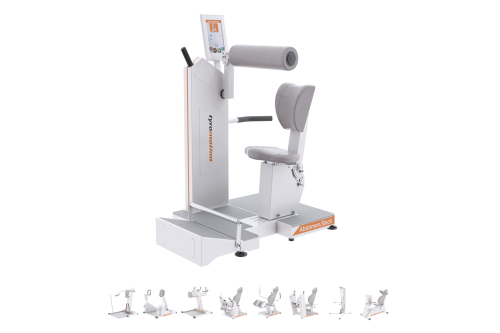 MTT-LineMedical training therapy
MTT-LineMedical training therapy
Get back in the game with the MTT-Line! The Medical Training Therapy devices are specifically designed to strengthen the six major muscle groups of the human body. Barrier free and maximum adjustability make the devices accessible for all types of patients.
- Software
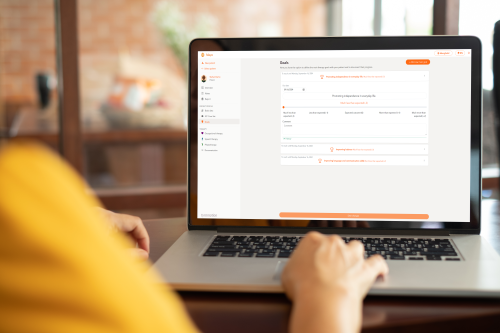 Maya Therapy Platform
Maya Therapy Platform
Maya reduces paperwork, standardizes documentation, and automates reporting, making administration effortless and efficient. Designed for therapists to work wonders!
- Upper Extremity
Health
Strength training after stroke – Exercises for Home
16. August 2021 ● 4 min. Reading time
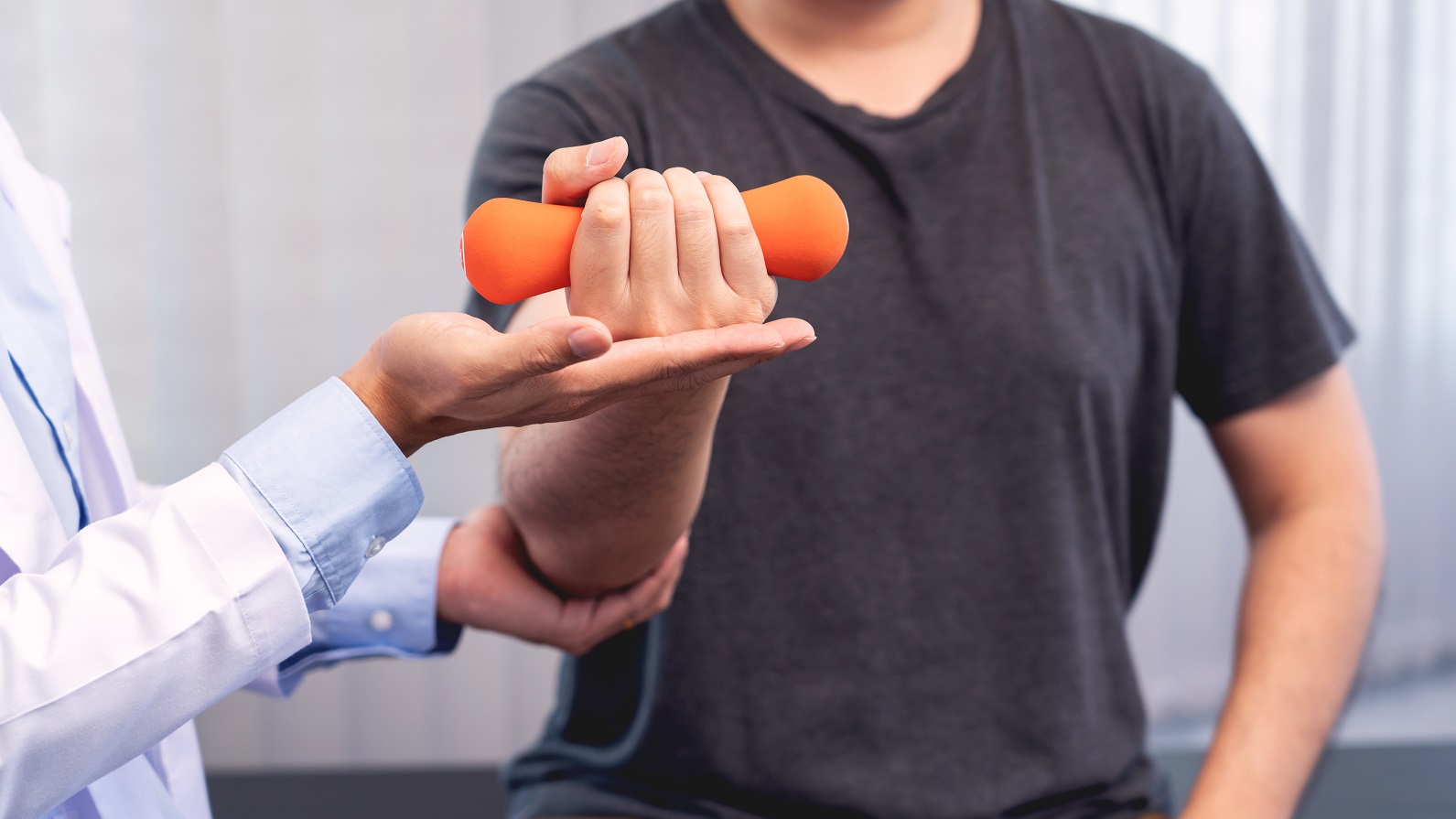
What happens to the muscles after a stroke?
After a stroke, the muscles on the affected side change. There are changes in the length and mobility of muscle fibers. Initially, the affected side is usually weak and feels sluggish and lifeless; over time, these muscles become rigid and clumsy when left untreated. Patients suffer from a limited ability to move in their daily lives. Getting up from an armchair or lifting and carrying objects may be difficult.
Therapists are aware of such muscular problems and can distinguish if a movement cannot be performed due to weakness or due to spasticity. Strength training is successfully used for both weak and spastic muscles. A successful training plan and a lot of motivation can contribute to the recovery of the diseased muscles.
What can be improved after a stroke by strength training?
Therapeutic experience and studies show that the force and strength of the affected side can be specifically trained after a stroke.
The step length and track width are increased through gait training. Walking safety is increased. At the upper extremity, improvement in the extent of movement is frequently seen. The arm can be raised higher. As a result, those affected can place a laundry basket on the table with both hands. Carrying out everyday activities without the help of others greatly increases the quality of life after a stroke.
Strength training after a stroke has a positive effect, not only on independence but also in everyday life. The pleasure of exercise increases mental health, and cognitive abilities improve. Affected people feel more joy and motivation.
Progressive resistance training after a stroke
Progressive resistance training is a form of strength training after a stroke. The intensity of the selected exercises increases continuously. The muscles slowly adjust to the increasing strain.
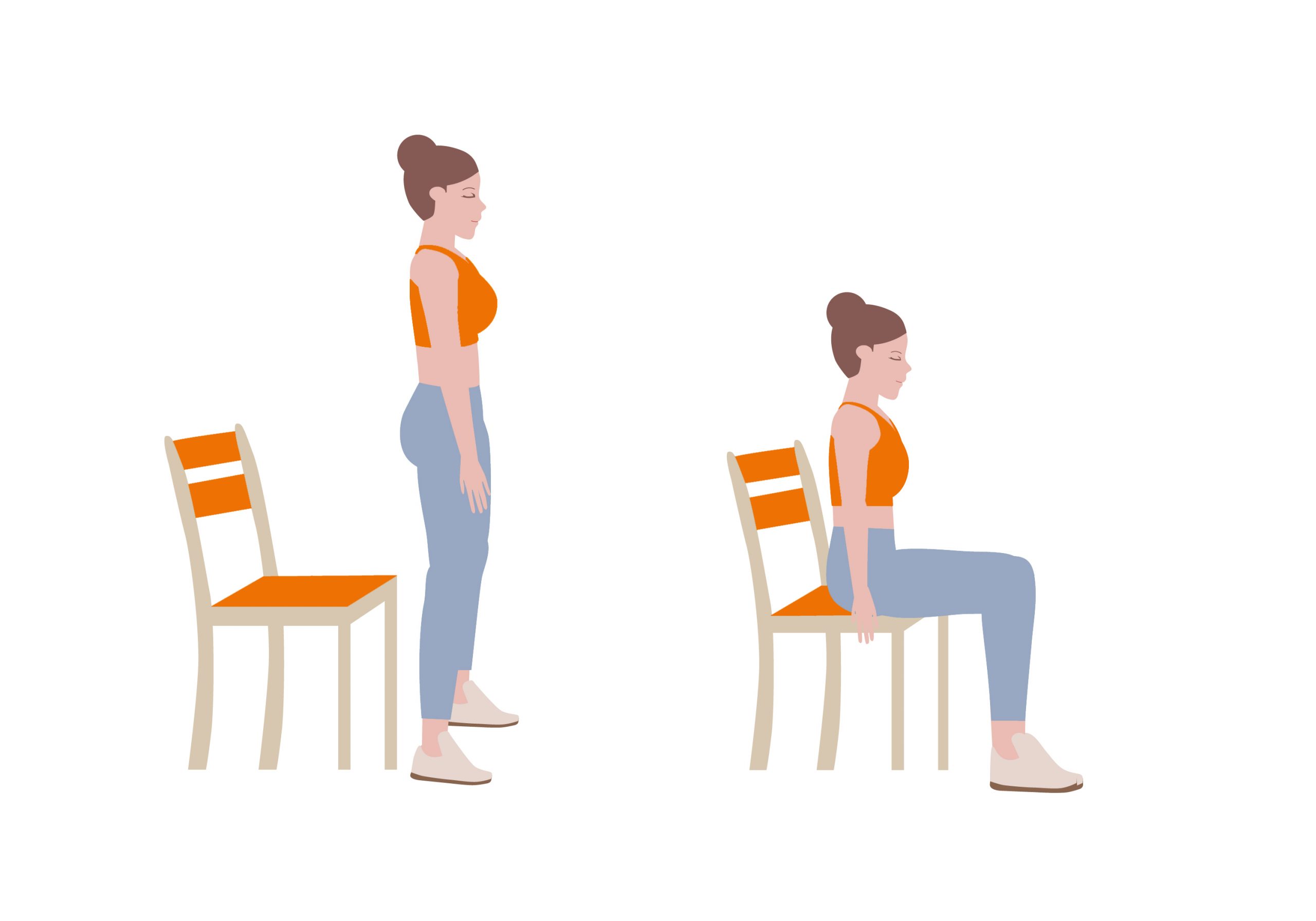
Try this type of standing exercise training:
- Sit down on a chair for this exercise. A strong, firm armchair will give you more support than a soft one.
- Slide your bottom to the front edge of the chair.
- Sit straight and place your feet slightly behind your knees.
- If you have armrests on your chair, place your hands near the front of the armrests. Shoulders width apart.
- Lean forward from the hip. Be sure always to keep your back straight.
- As you are leaning forward, press your heels into the floor. Slowly stand up.
- Straighten your legs. Lift your head to straighten your hips.
- Now slowly sit back down. The deliberate, slow movements exercise the eccentric activity of the muscles. While performing the exercise, make sure you are moving symmetrically. Try to support yourself as little as possible.
- Repeat this exercise 15 times. If this movement is too much at the beginning, do only as many repetitions as you can without getting out of breath.
- Depending on how good your coordination skills are, the exercise can be performed with or without stopping.
- After 15 repetitions, take a one-minute break.
- After the break, do a second and a third set. You will want to perform the third set with as much concentration and at the same pace as the first.
The exercise should be performed two to three times a week. Take a break for one day between the workouts. The muscles need recovery to strengthen and grow.
After two to three weeks, the intensity of the exercise can be increased. For this purpose, select a lower seat or use additional weight (for example, a filled backpack).
What is circuit class training?
circuit class training is used to train strength stamina. Different exercises are combined to address different muscle groups. This type of training brings variety and increases motivation. Each exercise is repeated 15 to 20 times. There are short breaks between exercises.
Below you will find some exercise recommendations for circuit class training of the lower extremities. The basis for every exercise is an upright position.
- Do alternating side taps with the left and the right leg.
- Do alternating steps forward with the left leg and the right leg, respectively, and always step back with each leg after making the step forward. The steps should be about the same size.
- Alternately rotate your toes outwards or inwards. In doing so, the weight is slightly shifted to the heels.
- Push up to tiptoe and lower again. The exercise can be performed with or without stopping.
- If your strength and coordination allow, try making small jumps with both legs. Be sure to land on the floor with both legs at the same time.
Discuss the exercises with your physiotherapist or occupational therapist to adapt them to your individual possibilities.
Ballistic training
When speed and skill are required in everyday life, the muscles usually need to act and react rapidly. This need also applies to the impression of the forefoot during walking or running.
For this purpose, a research group proposed a so-called ballistic training in which weights are quickly pushed or thrown into a room; for example, shooting balls for leg training or throwing objects for arm training.
All of these exercises can also be carried out in a pool or with the help of special training equipment. Training devices are available in most rehabilitation facilities, along with outpatient equipment-assisted training therapies, especially for stroke patients.
Strong through Visualization
In top-level sports, mental training has long been indispensable. Racing riders memorize the track guides exactly, and climbers rigidly plan every grip for challenging routes. Athletes can imagine how it will feel to win the race. Indian researchers were able to show that stroke patients also benefit from mental training. If visualizations are used in addition to strength training, the walking speed increases more than without these measures.

Patients, who have difficulty walking, imagine how they effortlessly stretch and bend the affected leg. They imagine the sequence of the movement, how they place one leg in front of the other. Imagine how you would feel doing that. What are your feelings? What are you particularly looking forward to? What will your family say? What will your friends say?
An aid in working with visualizations can be to have the movement sequence verbalized precisely by the therapist. This statement can also be recorded and played back at home as accompanying support during the training. The brain cannot distinguish whether the movements are actually carried out or merely imagined. Use this fact for your rehabilitation!
Author: Hannes Aftenberger
You might also be interested in
4. April 2023
Health
Rehabilitation
Stroke nutrition guidelines for optimal health
Nutrition as the key part in health and well-being of stroke survivors A healthy, balanced …
21. March 2023
Rehabilitation
Kinesio taping in neurology as a useful therapy supplement
The Kinesio tape and its usefulness in neurological therapy What was originally known only from …
7. March 2023
Rehabilitation
Exercises against freezing of gait in Parkinson’s disease
When the legs freeze – how does the symptom “Freezing of Gait” manifest itself? Parkinson’s …



 Contact
Contact 

 Contact
Contact 